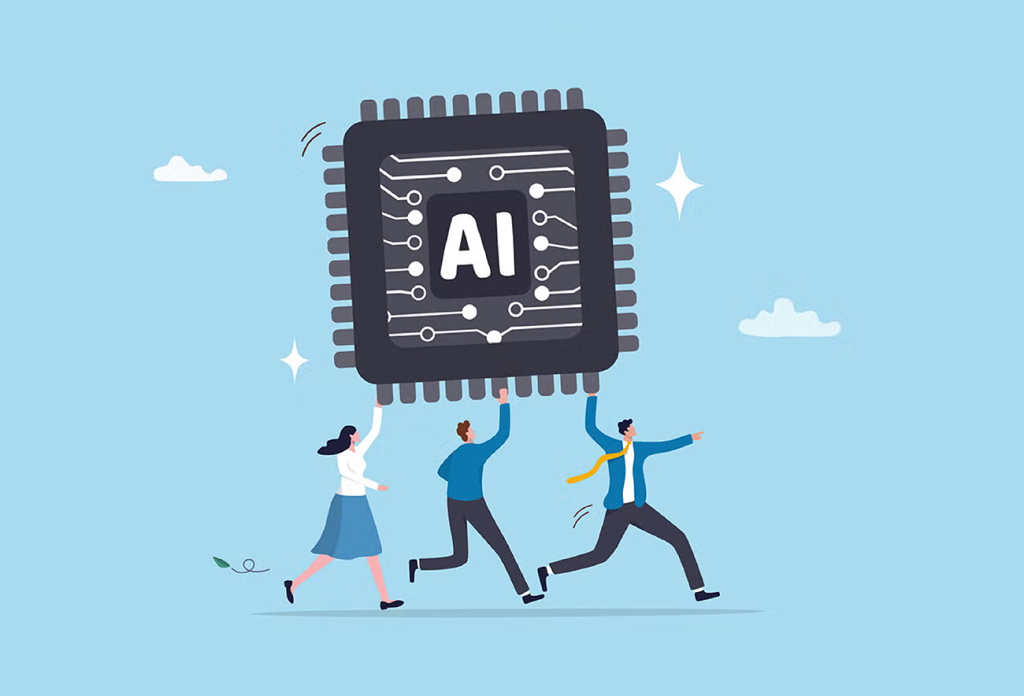AI can transform your business operations, slash processing times and deliver insights that drive real competitive advantage. So why are most Small and Medium-sized Enterprises (SMEs) still sitting on the sidelines?
After years of advising small and medium enterprises on ERP implementations, I’ve discovered that the biggest obstacle isn’t the technology itself – it’s a collection of very real, very fixable barriers that are keeping businesses from unlocking AI’s potential.

The cost conundrum
Perhaps the most significant obstacle is the uncertainty around costs and return on investment (ROI). Unlike established technologies where businesses can benchmark expenses and outcomes, AI implementation feels like venturing into uncharted territory.
Business owners tell me they struggle to quantify exactly what AI will cost them or how much time and money it will save. This uncertainty is particularly challenging for SMEs operating on tighter budgets, where every technology investment must deliver clear, measurable value.
Another key barrier to AI adoption in SMEs is a fundamental lack of trust – both in how AI systems handle sensitive data and in the reliability of the outputs they generate. Many businesses remain uneasy about sending confidential financial or customer information to cloud-based platforms, especially given growing concerns around data breaches, regulatory compliance, and loss of control. At the same time, there’s scepticism around the accuracy and accountability of AI-generated results.
Another major hurdle I regularly encounter is the prevalence of legacy Enterprise Resource Planning (ERP) systems. Many SMEs have invested heavily in established ERP platforms that, while functional, weren’t designed with AI integration in mind. The prospect of either completely replacing these systems or undertaking complex integration projects feels overwhelming. Given that ERP migrations are notoriously costly and risky endeavours, business owners often choose to stick with what they know rather than risk disrupting their operations.
The skills gap challenge
One of the most pressing issues I observe is the lack of in-house AI expertise. When business owners want to implement specific AI functionality, they often don’t know who to call or where to find the necessary skills. This forces them to seek external expertise, adding another layer of cost and complexity to their AI journey.
However, I’m optimistic about this challenge. Universities and colleges are heavily promoting AI education, meaning the next generation of workers will enter the job market with relevant skills. The issue is that these new graduates may not yet have the business acumen to effectively bridge the gap between AI capabilities and practical business applications.

Through my work with various SMEs, I’ve discovered that many businesses have fundamental data quality issues that must be addressed before AI can be effective. AI systems require clean, well-structured data to provide meaningful insights. Yet I frequently encounter businesses where basic information like addresses or product codes are inconsistently formatted across their systems.
For instance, I’ve seen companies where postcodes might appear in different fields depending on who entered the data, or where product descriptions vary based on individual data entry preferences. These inconsistencies, while seemingly minor, can significantly impact AI performance and must be resolved before implementing intelligent systems.
Practical steps forward
Despite these challenges, SME leaders should remain upbeat about the opportunities presented by AI. It’s important to start small and focused. Rather than attempting comprehensive AI transformations, businesses should identify specific pain points where AI can deliver immediate value.
Invoice processing using AI, for example, has proven highly successful for many of our clients. Companies handling hundreds of invoices monthly can save significant time by automating the extraction and processing of supplier invoices, regardless of their format.
I’ve also seen success with automated customer order processing, where AI can convert orders received via email, PDF or Excel into system-ready sales orders. One client is now processing hundreds of orders this way with remarkable accuracy. The technology’s capabilities in predictive analytics, process automation and customer experience enhancement are too significant to ignore.
Solutions like HansaWorld’s Standard ERP show what’s possible when AI is embedded directly into the core of an ERP system rather than being bolted on as a superficial layer. For example, Standard ERP’s AI-powered virtual assistant allows customers to call a business and speak to an AI bot that accesses real-time ERP data. Customers can ask natural language questions – such as checking their account balance, stock availability, or pricing – and even place orders by voice.
This represents the future that forward-thinking SMEs are working toward – not just software that processes data, but an intelligent partner that actively drives business growth. While the barriers to AI adoption are real, examples like this prove that the destination is worth the journey.
The path forward is clear: start small, think strategically and act now. Pick one pain point – invoice processing, order management or customer enquiries – and tackle it with AI. Build your data foundation, invest in skills development and watch as early wins create momentum for broader transformation.
The SMEs that take these first steps today won’t just survive the AI revolution – they’ll lead it. Your competitors are already planning their move. The real question isn’t whether you can afford to implement AI – it’s whether you can afford to wait.




